In the deep history of Earth's oceans and freshwater systems, one class of fish stands out for its unique adaptations: lungfish. These ancient survivors are capable of breathing both underwater through gills and above water using lungs. This remarkable ability allows them to endure in habitats that might be inhospitable for most other fish. Below, we explore the six extant species of lungfish, each a living relic from the distant past, and how their biology and behavior reveal secrets about the evolution of vertebrates.
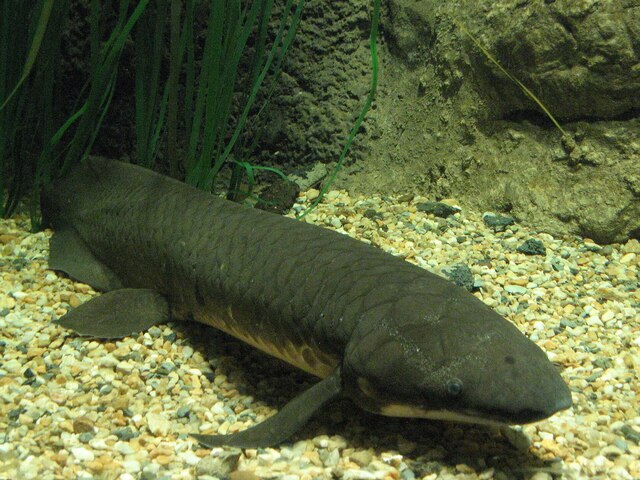
Native to the freshwater rivers and lakes of Queensland, Australia, the Queensland lungfish is one of the most ancient fish species still swimming today. With a cylindrical body that can reach lengths of up to 4 feet, this species displays a distinctly prehistoric appearance. Its broad head, coupled with large, paddle-like pectoral and pelvic fins, gives it an awkward yet unique swimming style.
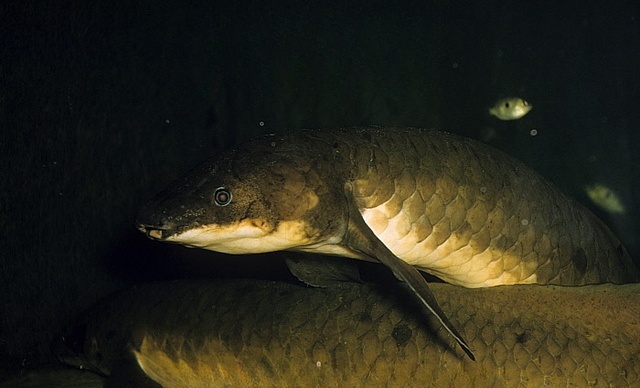
This lungfish has both gills and a single lung, which enables it to survive in waters with low oxygen levels. Its slow growth and long lifespan, along with its relatively unchanged morphology over millions of years, provide valuable insights into the early evolution of vertebrates. The Queensland lungfish is a key example of how ancient life forms have adapted to both aquatic and aerial breathing, making it one of the last links to the Devonian period.
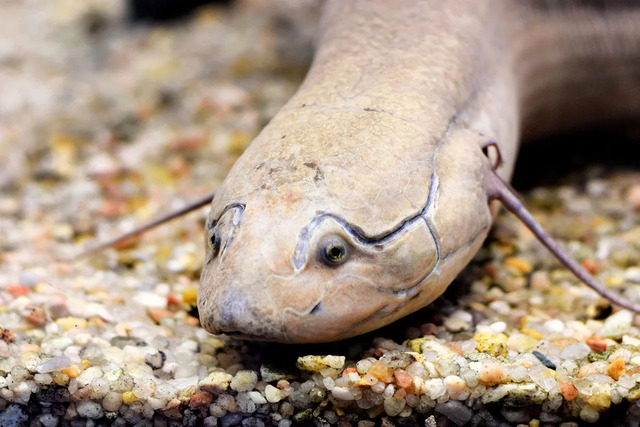
The Australian lungfish (Neoceratodus forsteri), also known as the Queensland lungfish, Burnett salmon and barramunda, The South American lungfish is found primarily in the Amazon Basin’s swampy, slow-moving rivers. Its elongated, eel-like body, growing up to 4 feet, is covered with smooth, scaleless skin, and it has long, filamentous fins resembling limbs rather than typical fins. This adaptation hints at the evolutionary pathway from aquatic life to terrestrial vertebrates.
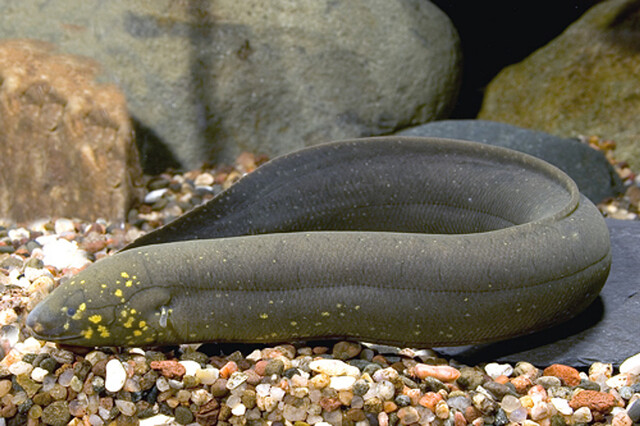
The South American lungfish relies on two well-developed lungs for air-breathing. During periods of drought, this species can enter a state of estivation. It secretes a mucus cocoon, burying itself in the mud to retain moisture while surviving harsh, low-water conditions. This ability to survive both underwater and in arid, oxygen-poor environments makes it a remarkable example of evolutionary resilience.
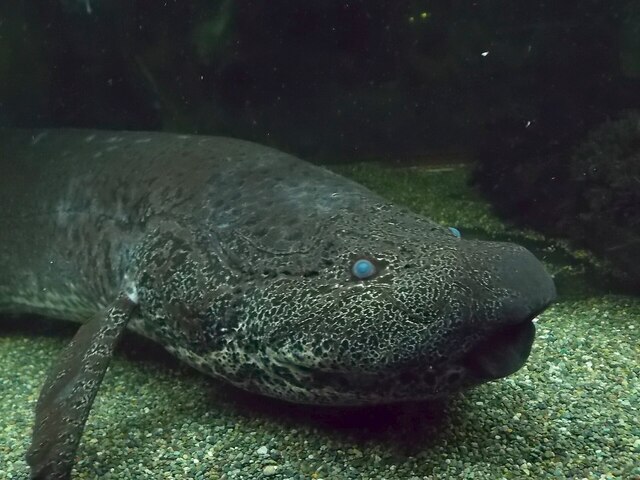
Hailing from East and Central Africa, the marbled lungfish is one of the largest and most visually striking lungfish species. Its slender, long body can reach up to 6 feet in length, with a marbled pattern that camouflages it within dense aquatic vegetation. This species possesses two well-developed lungs, and during the dry season when water levels decrease, the marbled lungfish enters estivation, wrapping itself in a mucous cocoon to survive until conditions improve.
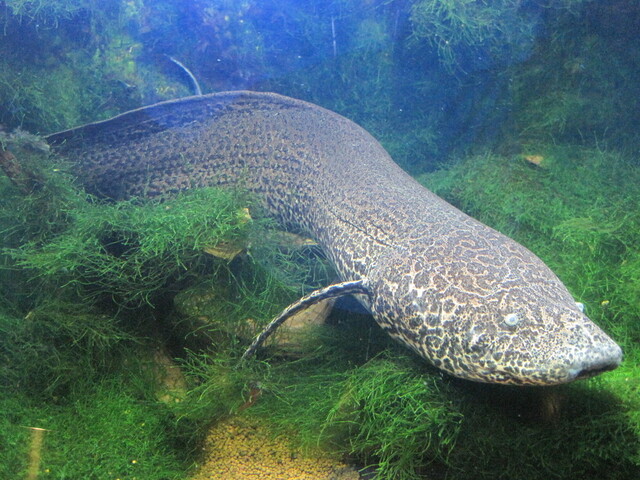
The marbled lungfish’s survival strategy of forming a protective cocoon and relying on both gills and lungs showcases its evolutionary advantage in fluctuating environmental conditions, allowing it to endure extreme droughts and low-oxygen environments.
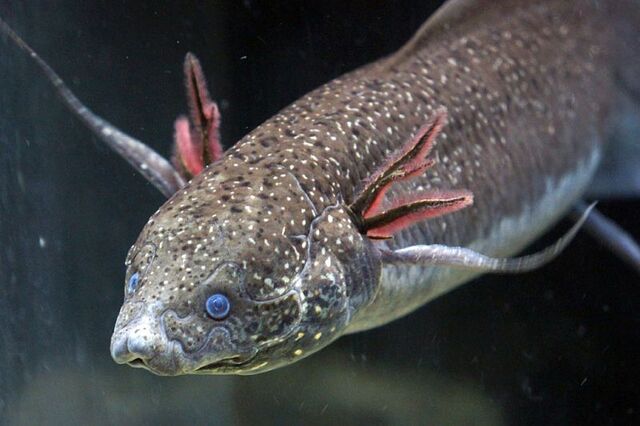
Smaller than its relatives, the gilled lungfish from East Africa is typically no more than 2 feet long. Its slender body, long filamentous fins, and smooth skin are adaptations that help it navigate through the muddy, slow-moving waters of its habitat. This species also relies on both gills and lungs for respiration.
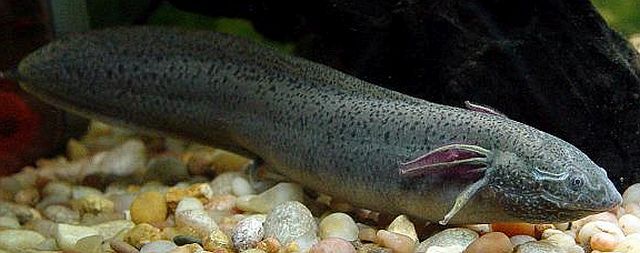
Like other lungfish species, the gilled lungfish can survive periods of drought by entering estivation. Encasing itself in a mucous cocoon within the mud, it can remain in a dormant state until the water levels rise again, a survival mechanism that has allowed this species to persist for millions of years.
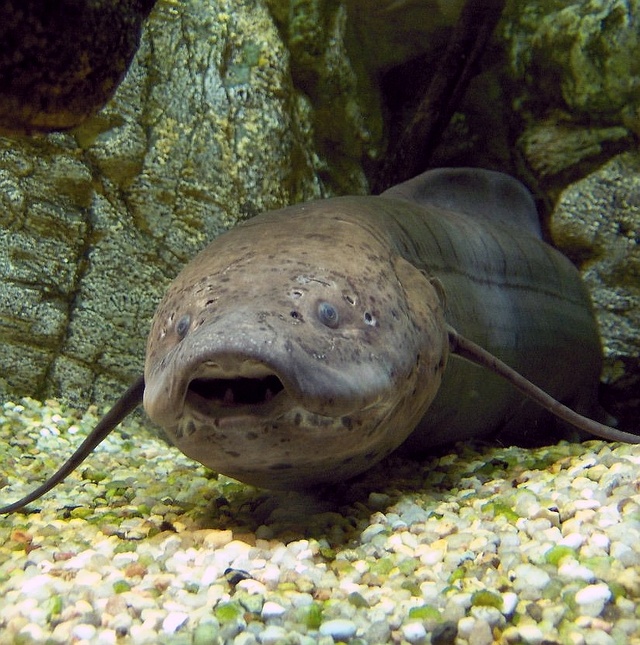
The West African lungfish inhabits freshwater rivers and floodplains throughout sub-Saharan Africa. It grows to around 3 feet in length and is known for its robust, elongated body and long, filamentous fins. Its mottled coloration provides excellent camouflage in its often turbid, slow-moving aquatic environments.
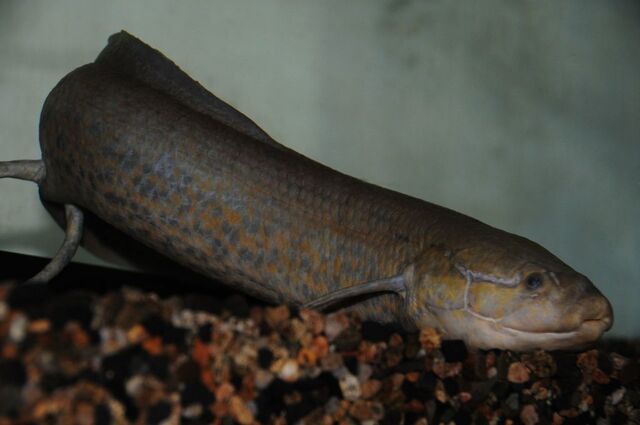
This species is adapted to low-oxygen conditions, as it possesses both gills and a pair of lungs. The West African lungfish can enter estivation for extended periods, up to a year, during the dry season. By sealing itself in a mud cocoon, it can endure prolonged droughts. This ability to survive without water for long periods is a testament to the lungfish’s evolutionary adaptability.
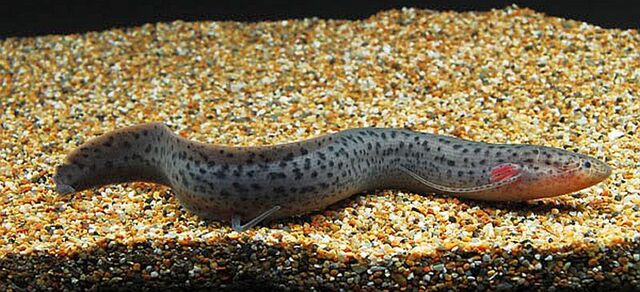
Native to the Congo River basin in Central Africa, the spotted lungfish is characterized by its striking spotted pattern, which helps it blend into the muddy, vegetated waters where it resides. It can reach lengths of up to 4 feet and has a slender, elongated body with long fins, further aiding its navigation through dense aquatic environments.
Like its relatives, the spotted lungfish can breathe through both gills and lungs, allowing it to thrive in environments where oxygen levels are low. It is also capable of entering estivation, wrapping itself in a mucous cocoon during droughts, allowing it to survive until the water levels rise again.
Lungfish are often referred to as living fossils because their physiology has remained relatively unchanged for millions of years. Their unique ability to breathe both through gills and lungs makes them a critical piece in understanding the evolution of vertebrates. Researchers believe lungfish may have been among the first vertebrates to transition from aquatic to terrestrial environments, as their paired, fleshy fins resemble the limbs of land-dwelling animals. The fact that they possess both gills and lungs further supports this theory, as it suggests they could have survived in environments with fluctuating oxygen levels, which would have been common in ancient, transitioning ecosystems.
Lungfish represent a key chapter in the story of vertebrate evolution. With their ancient origins dating back over 400 million years, these remarkable fish provide a glimpse into the transition from aquatic to terrestrial life. Their unique adaptations—such as the ability to breathe both air and water—have allowed them to survive in environments where few others could. Understanding these living fossils helps us piece together the puzzle of life’s evolutionary journey, from the oceans to the land.
animal tags: Neoceratodontidae
We created this article in conjunction with AI technology, then made sure it was fact-checked and edited by a Animals Top editor.